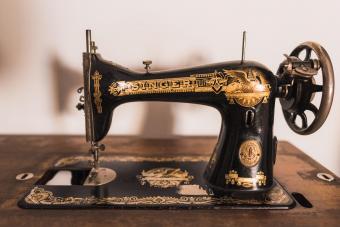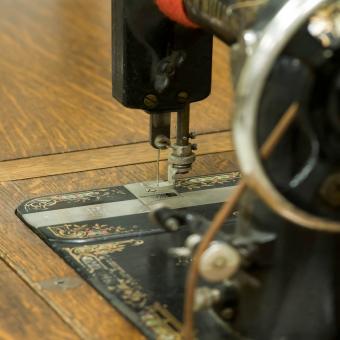Useful and Beautiful

Invention of Antique Sewing Machines

Antique Singer Sewing Machine

The Presser Foot

Treadle Sewing Machine

Sewing Machines in Cabinets

Sewing Machine Manufacturers

Child’s Sewing Machine

Decorative Childs Sewing Machine

Side Details

Decorative and Functional

An Antique You Can Use

© 2024 LoveToKnow Media. All rights reserved.







